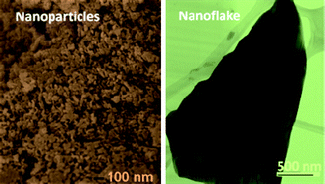A novel non-catalytic synthesis method for zero- and two-dimensional B13C2nanostructures
Abstract

* Corresponding authors
a
School of Materials Science and Engineering, Nanyang Technological University, 50 Nanyang Avenue, Singapore
E-mail:
MIYTok@ntu.edu.sg
Fax: +65 6790 4935
Tel: +65 6790 4935
b National Institute for Materials Science, 1-2-1, Sengen, Tsukuba, Ibaraki, Japan

 Please wait while we load your content...
Something went wrong. Try again?
Please wait while we load your content...
Something went wrong. Try again?
L. T. Su, S. S. Xie, J. Guo, A. I. Y. Tok and O. Vasylkiv, CrystEngComm, 2011, 13, 1299 DOI: 10.1039/C0CE00296H
To request permission to reproduce material from this article, please go to the Copyright Clearance Center request page.
If you are an author contributing to an RSC publication, you do not need to request permission provided correct acknowledgement is given.
If you are the author of this article, you do not need to request permission to reproduce figures and diagrams provided correct acknowledgement is given. If you want to reproduce the whole article in a third-party publication (excluding your thesis/dissertation for which permission is not required) please go to the Copyright Clearance Center request page.
Read more about how to correctly acknowledge RSC content.
 Fetching data from CrossRef.
Fetching data from CrossRef.
This may take some time to load.
Loading related content
